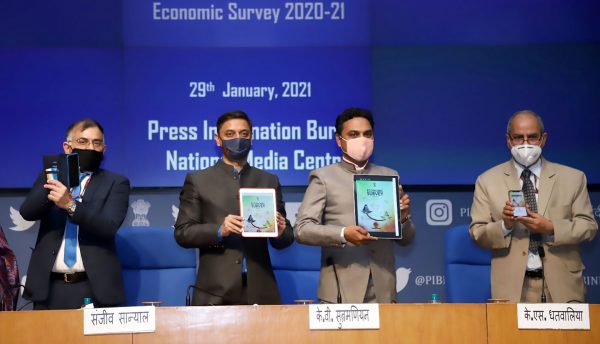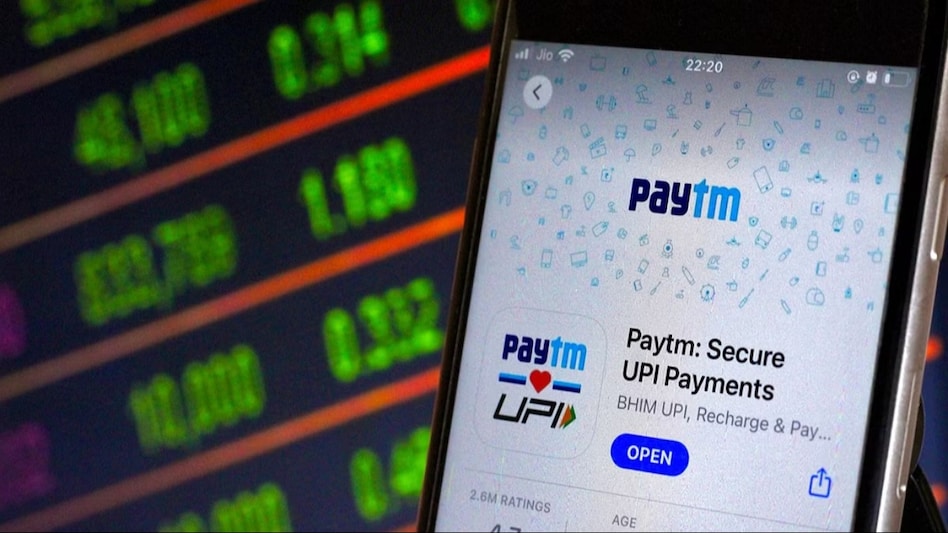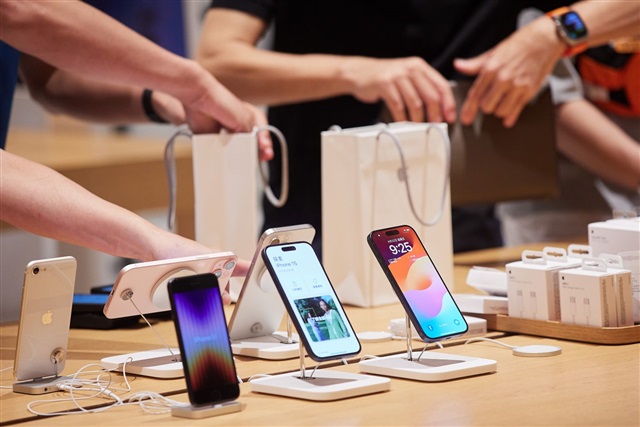Economic Survey recommends an increase in public spending on healthcare services from 1% to 2.5 to 3 % of GDP as envisaged in the National Health Policy 2017
Our Bureau
New Delhi
The Economic Survey 2020-21 tabled by Finance Minister Nirmala Sitharaman in the Parliament on Friday said the country’s economy after being gradually unlocked since June 2020 has experienced a V-shaped recovery.
“Despite the hard-hitting economic shock created by the global pandemic, India is witnessing a V-shaped recovery with a stable macroeconomic situation aided by a stable currency, comfortable current account, burgeoning forex reserves and encouraging signs in the manufacturing sector output,” the survey noted. The survey said the V-shaped economic recovery is due to mega vaccination drive, robust recovery in the services sector, and robust growth in consumption and investment.
Country’s Chief Economic Advisor Dr K Subramanian has likened India’s economic recovery to the Indian cricket team’s recent victory against Australia.
“The cover also captures the V-shaped recovery that has happened in the economy. In fact, it mirrors V-shape performance that the Indian cricket team delivered in Australia well after being short out for 36 in an hour, they went on to win the series. The resilience of the Indian economy is mirroring the resilience of Indian cricket team as well,” he said.
India’s primary deficit (Centre and states) for FY21 is assumed to be 6.8 per cent of GDP, according to the Economic Survey tabled in Parliament on Friday.
It said the Covid-19 pandemic has created a significant negative shock to demand. Active fiscal policy — one that recognizes that fiscal multipliers are disproportionately higher during economic crises than during economic booms — can ensure that the full benefit of seminal economic reforms is reaped by limiting potential damage to productive capacity.
The Indian economy can contract by 7.7 per cent in current financial year ending on March 31 and the growth could be 11 per cent in the next financial year, according to the Economic Survey tabled in Parliament by Finance Minister Nirmala Sitharaman.
The contraction in FY21 is mainly due to coronavirus (Covid-19) pandemic and the visible damage caused by the subsequent countrywide lockdown to contain it. The survey unveiled two days before the Union Budget is broadly in line with forecasts by the Reserve Bank of India (RBI) which has said it expected the country’s GDP to contract by 7.5 per cent in the year ending March 31.
The International Monetary Fund (IMF) recently pegged the contraction in India’s economy at 8 per cent in 2020-21. It expects a growth rate of 11.5 per cent in the 2021-22 before a decline to 6.8 per cent in 2022-23 and that India will regain the tag of the fastest-growing large economy in the world in both years.
The Economic Survey has strongly recommended an increase in public spending on healthcare services from 1 per cent to 2.5 to 3 per cent of GDP as envisaged in the National Health Policy 2017. It notes that this can significantly reduce the Out-of-Pocket-Expenditure (OOPE) from 65 per cent to 35 per cent of the overall healthcare spend. Finance Minister Nirmala Sitharaman tabled the Economic Survey 2020-21 in Parliament on Friday.
The survey observes that the health of a nation depends critically on its citizens having access to an equitable, affordable and accountable healthcare system. The OOPE as a share of total health expenditure drops precipitously when public health expenditure increases.
The survey also underlines that OOPE for health increases the risk of vulnerable groups slipping into poverty because of catastrophic health expenditures.
It says that life expectancy in a country correlates positively with per-capita public health expenditure and India has one of the highest levels of OOPE in the world, contributing directly to the high incidence of catastrophic expenditures and poverty.
An official release said the survey notes that Pradhan Mantri Jan Arogya Yojana (PMJAY) has been “a marquee evolution” for providing financial affordability to a large percentage of the Indian population.
The Economic Survey 2021 said that India’s sovereign credit ratings do not reflect its fundamentals. Never in the history of sovereign credit ratings has the world’s fifth largest economy been rated as the lowest rung of investment grade (BBB-/Baa3), it said. The survey said credit ratings map the probability of default and therefore reflect willingness and ability of borrower to meet its obligations. “India’s willingness to pay is unquestionably demonstrated through its zero sovereign default history. The country’s ability to pay can be gauged by low foreign currency denominated debt and forex reserves,” it said.
“It is, therefore, imperative that sovereign credit ratings methodology be made more transparent, less subjective and better attuned to reflect economies’ fundamentals,” it added.
























